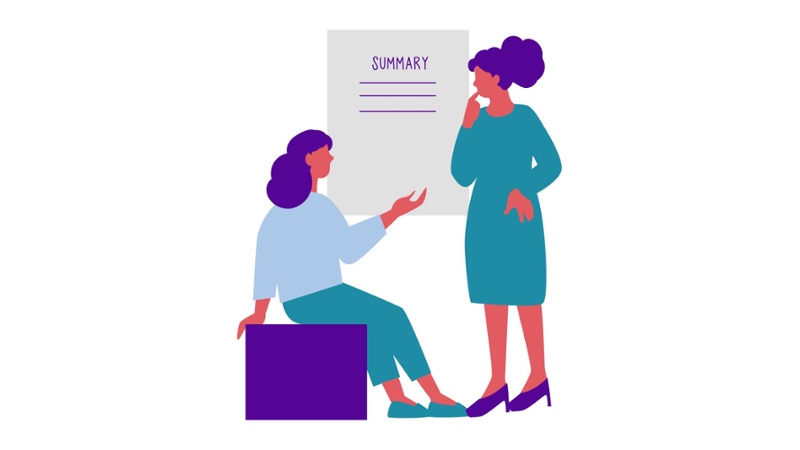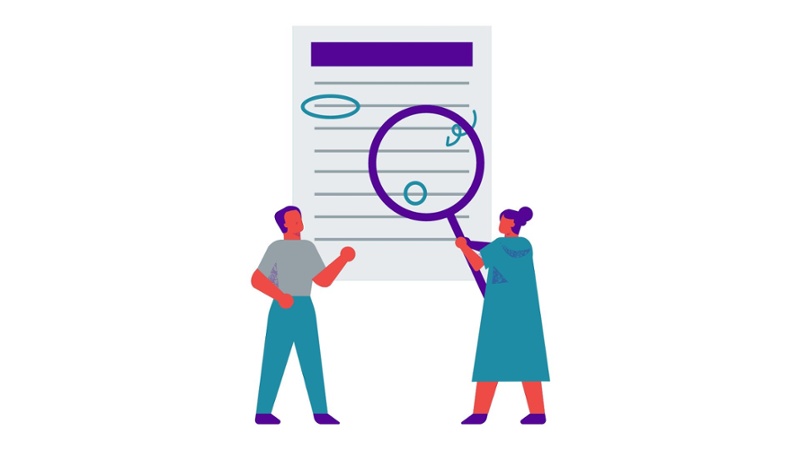When you're trying to convince people to use, create, update, or manage documentation, you'll likely face objections. Because most companies don't have a good practice of process documentation, many people don't have experience creating it or achieving the benefits.
Many objections can be grouped into one or more of these categories:
- Time
- Cost
- Unsure/Indifferent to the benefits
- Confidence
In this article, we'll discuss the fourth category of objections: when people lack confidence in their ability to use or create documentation or are afraid of perceived negative consequences of having instructions for their job.
Previously in this article series, I highlighted the #1 tip for overcoming objections:
Learn what the objecting person cares about, and explain how this change relates to what they care about.
If someone feels insecure or is lacking confidence in their knowledge, abilities, or job security, one thing they may care about is feeling confident in this new way of working.
Find more info about starting, writing, creating a system for maintenance, and more in this documentation guide.

Objection Example 1
“How will I know when I should use documentation?”
If people have never had access to documentation that helps them understand and complete their tasks, they may not be confident that they can learn this new way of working. These people may be early in their career or new to their role, as opposed to the more negative or skeptical objections you might hear from people on the job for a long time.
If you suspect or hear this objection, here are a few phrases and tactics to use to overcome it:
“Helping me test the documentation first, to make sure it is useful and clear, will help you understand which processes may be more complex and need documentation when you do them.”
Involving people in testing documentation will make them feel useful by helping you. It will also make them more confident in remembering documentation's purpose.
“If you’re doing something for the first time, that is an indicator to use documentation. Later, you may only need to refer back to one or two parts of it, to remember part of the process.”
When you're training someone, send them to the documentation first to familiarize them with the process and collect their questions before you train them one-on-one. The mental association will form between learning something new and looking for documentation.
“Instead of asking someone how to do something, save time and check for documentation first. Especially if it is a multi-step process that you don’t do every day. As much as we encourage people to be curious, ask questions, and seek solutions, being in the process of asking someone a question would be an indicator that you should look for documentation first.”
A way to help people remember to look at documentation before asking someone a question is to include links to documentation when you answer your questions. But be helpful and also give them a short answer in your response, not just a link to additional information.
“We’re building in links to the documentation into project tasks and other communication to make it easy for you to remember. For example, when you’re given a task to make a monthly report, the link to the process document will be included in the task. I would love to hear your feedback about other places where reminders to use documentation would be helpful. For example, when you’re given a task to make a monthly report, the link to the process document is included in the task in your project management system.”
Since one goal of documentation is so people don't have to remember every step of a process, we also want to create ways to remind people to use documentation automatically. This means adding links to documentation into all parts of your work system, including project management tasks and templates, meeting agendas, calendar blocks, and more.

Objection example 2
“I am not qualified to create documentation, I am not an expert.”
This is often the subtext to resistance to creating documentation.
Here are a few phrases to help people gain confidence that their knowledge is worth sharing and would be helpful to other people:
“We’re creating living documentation, it is never finished, we want to encourage continuous improvement as we learn more about the processes. So you don’t have to be afraid that your first draft is final forever.”
Perfectionism is the enemy, which is rooted in fear. Someone may be afraid they don't know "the best" way to do something or know every detail of a process. Encourage a "version 1" or "messy first draft" way of working. Share that the goal is to get the information out of people's heads, and then improve it once it is written down.
“That’s OK, we are all learning and improving. Just write a little at a time, every time you complete this process.”
Explain the "in progress" notes discussed in the content about writing documentation. This can reduce the hesitation to share work before they think it is 100% finished. (Documentation is never finished!) Documentation is a way of sharing knowledge and gaining knowledge by noticing different parts of the process or additional context during the many times the process is completed.
“We have approvers or owners set up to help edit your documentation, you don’t have to worry about the whole team or company seeing it before you get feedback about improvements or corrections.”
When people are getting used to the "messy first draft" and continuous improvement way of working, they may be uncertain about showing their work to the whole team in these early stages. If they know you or another senior team member will be editing or reviewing the work first, that can help them gain confidence in starting to create documentation.
“Creating documentation helps you become more of an expert: it involves talking to other people about the process, researching, tracking progress and improvements. It will help you learn and grow in your role.”
People who are early in their career or new to the role are often eager to learn to advance. Explain how creating documentation could help them be promoted to a new level or achieve related career goals.
“Think of documentation as sharing your knowledge or what you learned, with your teammates, saving them time and mistakes to do the same research and testing you’ve done. It may not be the “best” way to do something in the entire world but if it’s the best way you’ve found so far, and no one else has done it or documented it, you’re helping your team by sharing what you’ve learned.”
Rebranding documentation as knowledge-sharing, instead of thinking of documentation as compliance, can help create a more positive association and culture. Help people feel good about themselves and more confident by showing them how their efforts in documentation can help their team members.

Objection example 3
“I am worried you’ll take my job / work away if someone else can do it.”
This is another, often silent, objection from people worried about the perceived negative consequences of having instructions that allow other people to do their work. In this environment of numerous layoffs, you may not want to talk about the reality of how layoffs don't factor in whether work is documented or not since it is decided by other factors. Instead, focus on the positive aspects below.
If you suspect someone has this objection, here are a few phrases you could use to overcome it:
"Documentation will help you do your work more consistently, producing better results and increasing your chance of promotion.
Documentation can show how much work they are doing. It makes their work visible. Other people may not understand the complexities involved in other people's processes if they don't see those processes written down.
I learned this in a corporate job where my manager changed many times in one year, so no one knew all the work I was doing for different departments. The work not being visible meant I didn’t get promoted. I had to document it all to make my case for a promotion.
Documentation also makes training the person taking over in the current role easier. A big reason why people aren't promoted is because of the time it takes to train someone to take over the old role. Managers are busy and are overwhelmed at the thought of training someone new to do their team member's current role, which prevents that team member from moving into a new role. Onboarding without documentation requires a lot of one-on-one meetings, phone calls, question-answering, and work-reviewing time of the manager, all of which can be reduced with documentation.
"Documentation eases stress by freeing up brain space of from repetitive tasks, easing decision fatigue and memory load, so you save energy for new, important work."
Explain how that new, important work will not only be more interesting and engaging for this team member, it will also be more likely to lead to a promotion compared to repetitive tasks that can be documented.
"Documentation allows team members to cross-train and fill in for you when you’re out of office, easing your stress while you’re out and reducing the workload when you return
People are often afraid to take time off because they know the workload that will pile up while they are gone, at companies without good documentation and back-up processes. Not taking time off is one of many factors that lead to burnout, which can lead to poor work performance, which could lead to losing their job. Explain the correlation between taking time off to rest and recharge to do better work, which gives them more job security and could help them be promoted sooner.
Thank you for reading part four of four in this series! I hope I have armed you with tactics to overcome objections and start creating a culture of documentation at your company!
- Part 1: Time objections
- Part 2: Cost objections
- Part 3: Objections from people who are unsure/Indifferent to the benefits
- Part 4: Objections related to confidence
Topics: Documentation



